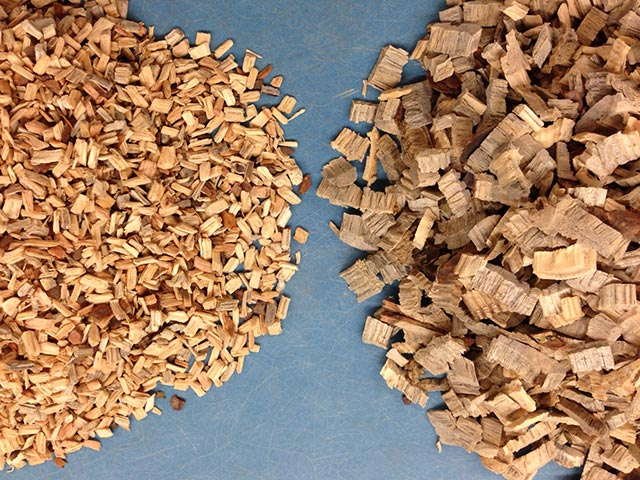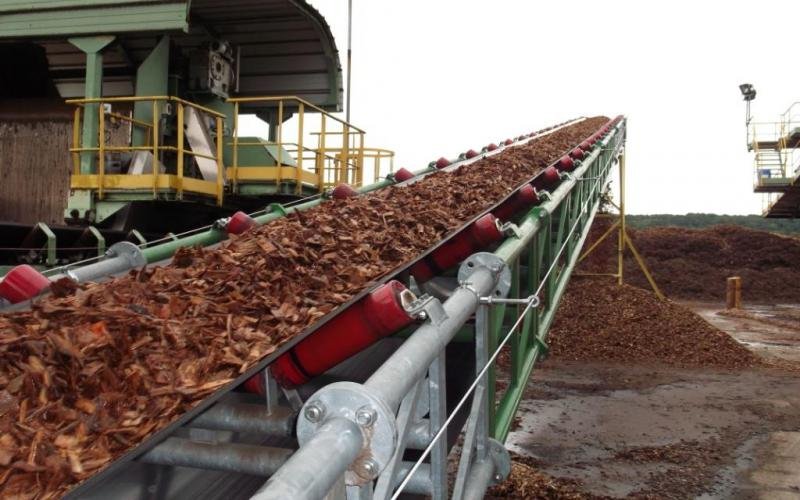In the world of sawdust and wood chip operations, bulk density plays a crucial role in ensuring efficiency and cost-effectiveness. Bulk density refers to the mass of a material per unit volume, and it is a key factor in determining how much material can be transported, stored, and processed. By improving bulk density, companies can optimize their operations, reduce costs, and enhance the quality of their end products.
What is Bulk Density and How Does it Affect Sawdust and Wood Chip Operations?
Bulk density is a measure of how densely packed a material is. It is calculated by dividing the mass of a material by its volume. In the context of sawdust and wood chip operations, bulk density determines how much material can be transported in a given space, how efficiently it can be stored, and how easily it can be processed.
- Transportation: When it comes to transporting sawdust and wood chips, bulk density is crucial. Higher bulk density means that more material can be transported in each load, reducing the number of trips required and saving on transportation costs. It also allows for more efficient use of transportation vehicles, as they can carry a greater volume of material.
- Storage: Bulk density also affects the storage of sawdust and wood chips. Higher bulk density allows for more efficient use of storage space, as more material can be stored in a given area. This is particularly important for companies with limited storage capacity or those looking to maximize their storage efficiency.
- Processing: Bulk density plays a significant role in the processing of sawdust and wood chips. Higher bulk density allows for more efficient processing, as it reduces the amount of time and energy required to handle and process the material. It also improves the consistency of the end product, resulting in higher quality products.
The Benefits of Improving Bulk Density in Sawdust and Wood Chip Operations
Improving bulk density in sawdust and wood chip operations offers several benefits for companies in this industry.
Increased efficiency and productivity: By improving bulk density, companies can increase their efficiency and productivity. With higher bulk density, more material can be transported, stored, and processed in a given time frame. This leads to faster turnaround times, increased production capacity, and ultimately, higher profits.
Reduced transportation and storage costs: Higher bulk density means that more material can be transported and stored in a given space. This reduces the number of trips required for transportation and allows for more efficient use of storage facilities. As a result, companies can save on transportation and storage costs, leading to significant cost savings in the long run.
Improved quality of end products: Bulk density also affects the quality of the end products. Higher bulk density allows for more consistent processing, resulting in products with uniform characteristics. This is particularly important for companies that produce wood pellets or other value-added products from sawdust and wood chips. Improved quality can lead to higher customer satisfaction and increased demand for the products.
How to Measure Bulk Density in Sawdust and Wood Chips
Accurate measurement of bulk density is essential for effective management of sawdust and wood chips. There are several techniques available for measuring bulk density, including the use of specialized equipment.
One common method is the cylinder method, where a known volume of material is placed in a cylinder and weighed. The bulk density is then calculated by dividing the mass of the material by its volume. This method is relatively simple and cost-effective but may not be suitable for materials with irregular shapes or sizes.
Another method is the tap density method, which involves filling a container with the material and tapping it to settle the particles. The bulk density is then calculated by dividing the mass of the material by its volume after tapping. This method is more suitable for materials with irregular shapes or sizes.
Specialized equipment, such as bulk density meters or pycnometers, can also be used to measure bulk density. These devices provide more accurate and precise measurements, particularly for materials with irregular shapes or sizes. However, they can be more expensive and require specialized training to operate.
Accurate measurement of bulk density is crucial for effective management of sawdust and wood chips. It allows companies to monitor and control the bulk density of their materials, identify areas for improvement, and make informed decisions to optimize their operations.
Factors that Affect Bulk Density in Sawdust and Wood Chips
Several factors can affect the bulk density of sawdust and wood chips. Understanding these factors is essential for effectively managing bulk density in operations.
Moisture content: Moisture content is a significant factor that affects the bulk density of sawdust and wood chips. Higher moisture content leads to lower bulk density, as the water fills the spaces between the particles. Drying the material can significantly increase its bulk density and improve its handling and processing characteristics.
Particle size and shape: The size and shape of the particles also affect the bulk density. Smaller particles tend to have higher bulk density, as they can pack more tightly together. Irregularly shaped particles may have lower bulk density compared to uniformly shaped particles, as irregular shapes can create voids between the particles.
Density of the wood species: The density of the wood species used also affects the bulk density. Species with higher densities tend to have higher bulk densities, as there is more mass packed into a given volume. Companies can consider using wood species with higher densities to improve the bulk density of their materials.
Processing methods: The processing methods used can also impact the bulk density of sawdust and wood chips. For example, particle size reduction techniques, such as grinding or chipping, can increase the bulk density by reducing the particle size. Compaction methods, such as pelletizing or briquetting, can also increase the bulk density by compressing the material.
Techniques for Improving Bulk Density in Sawdust and Wood Chips
There are several techniques available for improving the bulk density of sawdust and wood chips. These techniques can be used individually or in combination to achieve the desired results.
- Drying techniques: Drying the material is one of the most effective ways to improve bulk density. By removing moisture from the material, its bulk density increases significantly. Various drying techniques can be used, including air drying, kiln drying, or using specialized drying equipment. The choice of drying technique depends on factors such as the moisture content of the material, available resources, and desired results.
- Particle size reduction: Particle size reduction techniques, such as grinding or chipping, can also improve bulk density. Smaller particles tend to have higher bulk density, as they can pack more tightly together. Companies can invest in equipment such as hammer mills or chippers to reduce the particle size of their materials and improve their bulk density.
- Compaction methods: Compaction methods involve compressing the material to increase its bulk density. This can be achieved through techniques such as pelletizing or briquetting. Pelletizing involves compressing the material into small pellets using a pellet mill, while briquetting involves compressing the material into larger briquettes using a briquetting machine. These methods not only improve bulk density but also result in more uniform and consistent products.
- Chemical treatments: Chemical treatments can also be used to improve bulk density. For example, adding binders or adhesives to the material can help bind the particles together, increasing their bulk density. However, it is important to consider the environmental impact and potential health hazards associated with chemical treatments.
The Role of Equipment in Improving Bulk Density in Sawdust and Wood Chips
Equipment plays a crucial role in improving bulk density in sawdust and wood chip operations. There are various types of equipment available that can be used to optimize bulk density.
- Grinders and chippers: Grinders and chippers are used to reduce the particle size of sawdust and wood chips, improving their bulk density. These machines can be equipped with different types of blades or hammers to achieve the desired particle size. Companies can invest in high-quality grinders or chippers to ensure efficient particle size reduction and improved bulk density.
- Pellet mills: Pellet mills are used to compress sawdust and wood chips into small pellets, increasing their bulk density. These machines apply pressure and heat to the material, causing it to bind together and form pellets. Pellet mills come in various sizes and capacities, allowing companies to choose the most suitable option for their operations.
- Briquetting machines: Briquetting machines are used to compress sawdust and wood chips into larger briquettes, improving their bulk density. These machines apply pressure to the material, causing it to bind together and form briquettes. Briquetting machines come in different sizes and configurations, allowing companies to choose the most appropriate option for their needs.
- Dryers: Dryers are used to remove moisture from sawdust and wood chips, improving their bulk density. These machines use heat or airflow to evaporate the moisture from the material. Companies can invest in different types of dryers, such as rotary dryers or flash dryers, depending on their specific requirements.
Best Practices for Managing Sawdust and Wood Chips to Improve Bulk Density
To effectively manage sawdust and wood chips and improve bulk density, companies should follow best practices in storage, handling, and maintenance.
Proper storage and handling techniques: Proper storage and handling techniques are essential for maintaining the bulk density of sawdust and wood chips. Companies should store the material in dry and covered areas to prevent moisture absorption. They should also handle the material carefully to avoid unnecessary compaction or breakage, which can reduce bulk density.
Regular maintenance of equipment: Regular maintenance of equipment is crucial for ensuring optimal performance and improving bulk density. Companies should follow the manufacturer’s recommendations for maintenance and conduct regular inspections to identify and address any issues. This includes cleaning, lubricating, and replacing worn-out parts as necessary.
Monitoring and adjusting moisture content: Monitoring and adjusting the moisture content of sawdust and wood chips is essential for maintaining and improving bulk density. Companies should regularly measure the moisture content of the material and take appropriate actions to ensure it is within the desired range. This may involve using drying techniques or implementing moisture control measures during storage and handling.
Challenges and Limitations of Improving Bulk Density in Sawdust and Wood Chip Operations
While improving bulk density offers significant benefits, there are also challenges and limitations that companies may face.
Cost of equipment and processing methods: Investing in equipment and implementing processing methods to improve bulk density can be costly. Companies need to carefully evaluate the costs and benefits before making any investments. It is important to consider factors such as the scale of operations, available resources, and potential return on investment.
Difficulty in achieving consistent results: Achieving consistent results in improving bulk density can be challenging, especially when dealing with natural materials such as sawdust and wood chips. Factors such as moisture content, particle size, and density can vary, making it difficult to achieve consistent results. Companies need to carefully monitor and adjust their processes to ensure consistent and optimal results.
Environmental concerns: Improving bulk density may involve the use of energy-intensive processes or chemical treatments, which can have environmental implications. Companies need to consider the environmental impact of their operations and explore sustainable alternatives. This may include using renewable energy sources, implementing waste management practices, or exploring environmentally friendly processing methods.
The Future of Sawdust and Wood Chip Operations with Improved Bulk Density
In conclusion, bulk density plays a crucial role in sawdust and wood chip operations. By improving bulk density, companies can enhance their efficiency, reduce costs, and improve the quality of their end products. Various techniques and equipment are available to improve bulk density, including drying techniques, particle size reduction, compaction methods, and chemical treatments.
However, companies need to consider the challenges and limitations associated with improving bulk density, such as the cost of equipment, difficulty in achieving consistent results, and environmental concerns. With proper management and continuous improvements, sawdust and wood chip operations can benefit from enhanced bulk density for years to come.
Originally posted 2024-03-01 12:26:21.



